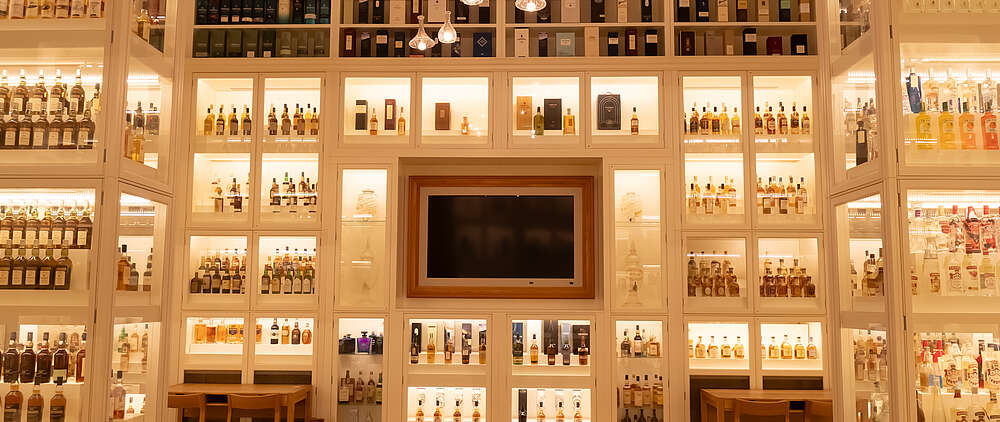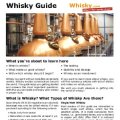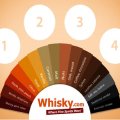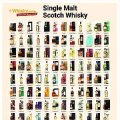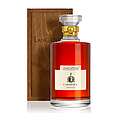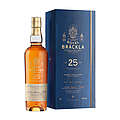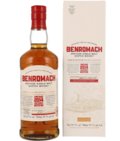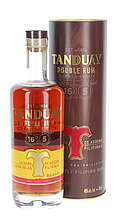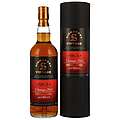Whisky labelling
Similar to German or French wine, you can tell a lot from a whisky's label. Whisky bottles, especially those from independent bottlers, often differ in terms of both content and labelling. Many people don't care - but some don't. With a few basic rules, you can distinguish simple whiskies from high-quality ones. Here you can learn about the most important characteristics of Scotch whisky with the help of three different labels and a video.
We start with the label of a simple, inexpensive blended whisky. More details can then be found on a single malt whisky and then we go into real detail with a single cask bottling.
1. blended Scotch whisky
A blended Scotch whisky, in this example, has at least the details described on the label above. However, a few verbal explanations are also required.
Scotch: Whisky may only be labelled Scotch if it has been matured for at least 3 years in oak casks in Scotland. Without the Scotch designation, this whisky could come from India, for example. India is one of the world's largest whisky-producing countries.
Age: If no exact age is stated on the label, you can assume that the whisky it contains is usually only the required minimum age of 3 years. Do not be confused by words such as 'rare'. The J&B shown, for example, is one of the best-selling whiskies in the world.
Bottle content: Various units are permitted when specifying the bottle content. For example, bottles can be labelled with 70cl or 0.7 litres. The letter 'e' after the contents refers to the determination of the volume. 'e' stands for 'estimated'. In a technical process such as bottling, there are always small deviations.
Alcohol content: The alcohol content is given as a percentage of the bottle content (volume). Theoretically, you could also state a percentage of the weight. However, this is not permitted by law.
2. single malt Scotch whisky
Single malt Scotch whisky is made exclusively from malted barley and only comes from a single distillery. This is why the name of the distillery is always stated on the label. If you find the words 'blended malt' on a bottle, it is usually a malt whisky blended from several distilleries. Please do not confuse such a blended malt with a blended Scotch (see above). In the latter, larger quantities of industrial whisky (grain whisky) have been added.
Region: The term single malt Scotch whisky may be preceded by the region, e.g. 'Highland'. The classic regions are Highlands, Speyside, Lowlands, Islay and Campbeltown. Since a change in the law in 2009, other regional designations (e.g. Orkney, Arran) may now also precede the whisky designation.
Age: The age on the label of a whisky bottle indicates how old the youngest of the whiskies bottled was. Single malt whisky bottles also contain whiskies of different ages, but from a single distillery. In principle, the older the whisky, the softer and better it is, because sharp flavours degrade over the storage period. However, the speed of maturation also depends on the size of the cask. A whisky that has been aged for 12 years in small casks is generally softer than a whisky that has been aged for 18 years in very large casks, for example. So please don't just choose according to age! There are now also many bottlings without an age statement. Here, older whiskies are mixed with younger ones until a harmonious flavour is achieved.
Alcohol content: The better a whisky becomes, the higher its alcohol content is usually bottled. This is due to the manufacturers' philosophy of giving the consumer a little more of the purchased product when buying a more expensive bottle. But beware! Most whiskies taste better when diluted than without the addition of water. This has nothing to do with adulteration or watering down. A bottle with a higher alcohol content will therefore generally last longer than a bottle reduced to drinking strength.
3. cask strength bottlings
The bottling of cask strength single malt Scotch whisky is a speciality not to be missed. The whisky comes undiluted from the cask into the bottle!
Age: Each cask is labelled with the exact date of distillation so that its age can be verified. This date and the date on which the whisky was bottled are usually found on single cask bottlings. You will also find details of the cask type. From this, it is possible to deduce the flavour of the whisky without having tasted it.Limited number: As whisky matures individually in casks, each cask tastes different. For this reason, only a limited number of bottles of cask-finished whisky are available. If the whisky is successful in sales, the bottler will try to re-bottle a comparable cask, naturally with a slightly different flavour. In addition to the bottle number, the number of bottles bottled is sometimes also stated.
Alcohol content: Don't be put off by the relatively high alcohol content of a cask bottling. These whiskies are usually reduced to drinking strength 50:50 with still, low-mineral spring water. Your bottle will therefore last twice as long. And the more intense flavour that results from the fresh dilution and the opportunity to experiment greatly enhances your taste experience.Filtering: Some bottlers swear by filtering, others are strictly against it. Some cool the whisky down to a few degrees (Celsius) beforehand in order to capture all the low-solubility components during filtering (chill filtering). Please also read the article on alcohol and water.
With a little practice and knowledge of this special information, it is quite easy to deduce the contents of a whisky bottle from its label. This makes it easier for you to judge a whisky that interests you or is offered to you.





